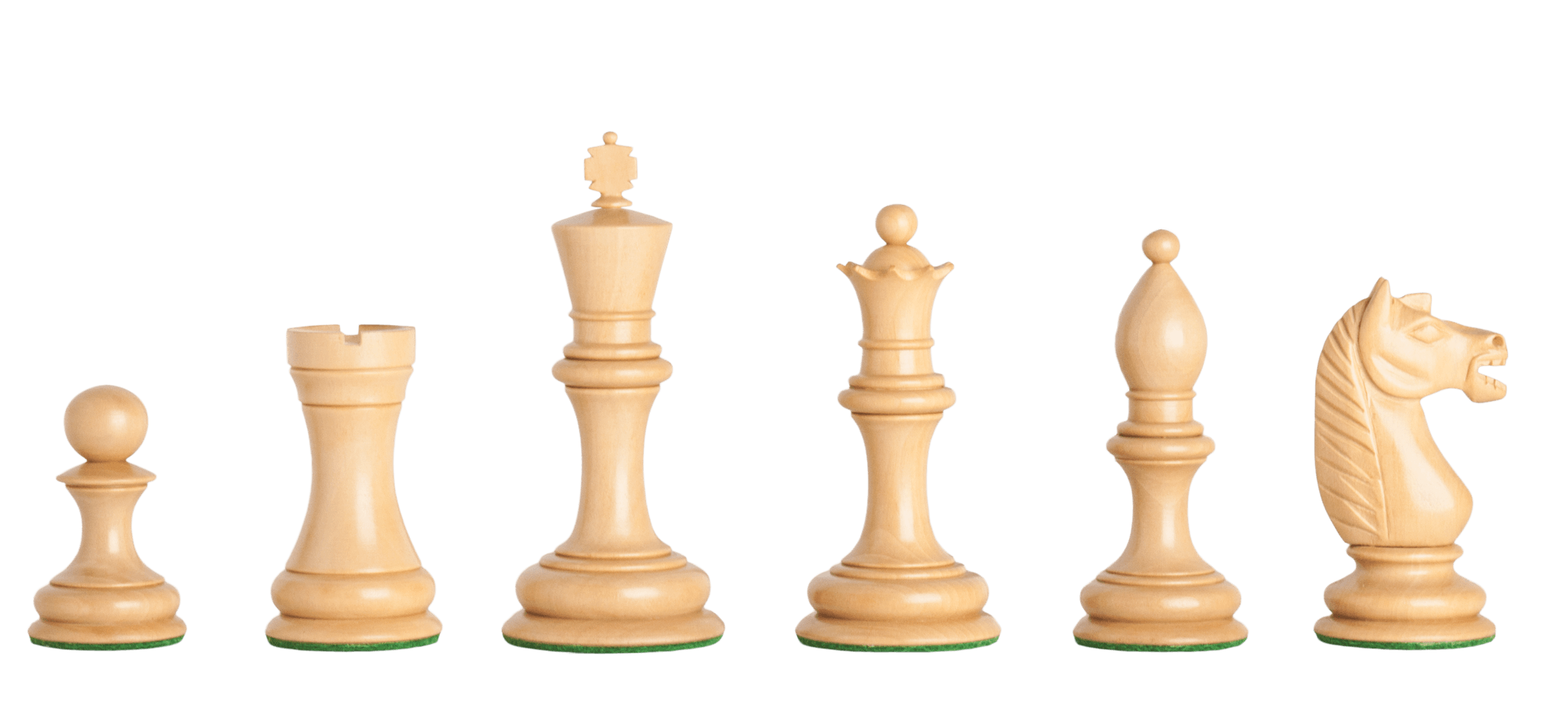
This is the Botvinnik Flohr set recently released by House of Staunton. HOS's description of this set correctly links this set to the '33 match. The name should reflect the year to avoid confusion with the '35 set, which, in my opinion, has just as much claim to the Botvinnik and Flohr label as the '33 set. Note the curved rook, the short, hourglass stems of the king, queen, and bishop, and the pointed head of the bishop.

































The recent introduction of House of Staunton's "Botvinnik Flohr Luxury Chess Pieces" has brought to light some confusion over just what a "Botvinnik Flohr" set is. Previously, ChessBazaar had released a similar design which it calls the "Botvinnik Flohr 1935 Reproduced Chess Pieces."
In fact, two different designs have enjoyed the title, and both are directly linked to Botvinnik and Flohr. The first design, reproduced by both ChessBazaar and House of Staunton, is the set used by Botvinnik and Flohr in their 1933 match. The second design originates with the 1935 Moscow Tournament, in which Flohr and Botvinnik tied for first place and drew their game. The designs are quite different, and one should not be used to criticize the historical authenticity of the other. We need to distinguish the '33 set from the '35 set and do so in how we refer to them. The notes to the photos that follow tell the story and unravel the confusion...